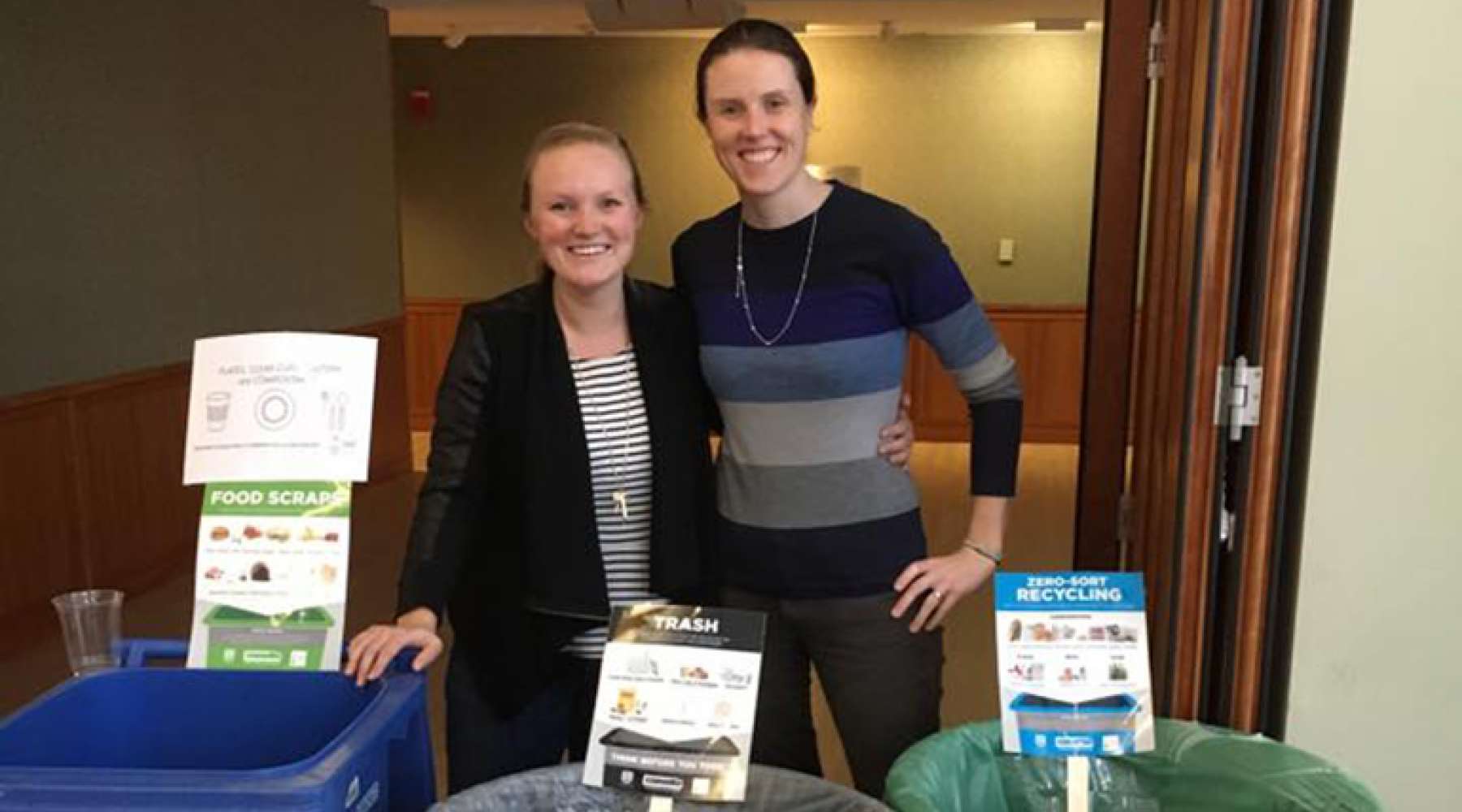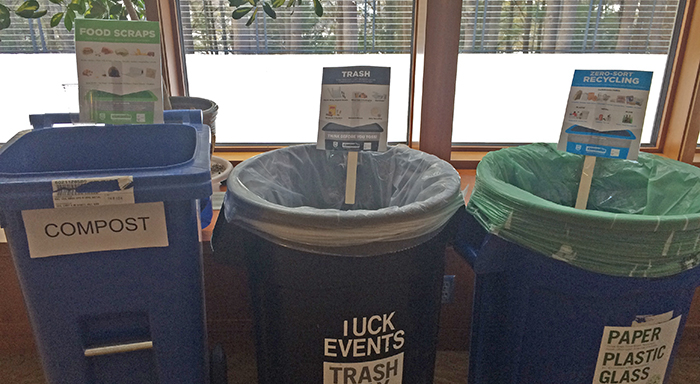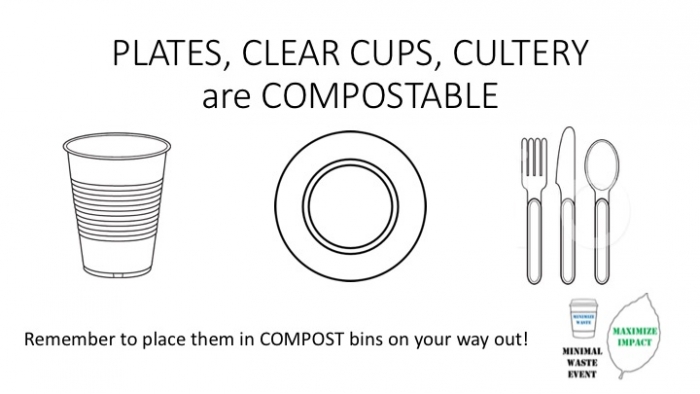
 By Catherine Boysen T’18
By Catherine Boysen T’18Conferences at Tuck are a gathering place for discussion, ideas, and inspiration—but gathering hundreds of people also produces a tremendous amount of waste. This year, the Business and Society Conference sought to challenge this norm by creating as little waste as possible during the two-day event. As a result, the conference produced less than one bag of landfill trash per day! Our learnings are easily replicable. Below is a summary of what we learned.
Reducing waste starts with proper sorting, and proper sorting starts with signage. An improperly sorted recycling bag (e.g. one that is contaminated with trash or food) gets re-routed to the landfill. By decreasing our contamination rate, we reduce the amount of material added to the landfill by keeping it in the recycling stream. At the BSC, we found success by partnering with Casella Waste Management to make colorful, descriptive signs for each bin. It was essential to have a conference volunteer at each waste station to help guests with their sorting (and when necessary, to don gloves to re-sort a bag!).

We recognized the need for better education around how to properly sort. For instance, many people don’t know that a paper coffee cup can’t be recycled due to the inner wax liner. This was the reason we encouraged everyone to bring their own mug, as fewer coffee cups used would mean less trash produced. We expanded our signage to engage guests not just at the point of throwing something out, but also at the point of pickup. As soon as they reached for a coffee cup or a plate, they’d have a clear sign telling them whether that product should be composted or thrown out.

Waste reduction means we need to have the infrastructure to dispose of all our waste properly, and that includes compost for food waste and plates. We invested in compostable plates, cups, and cutlery, and we were delighted to find that two of our food vendors, theBox and King Arthur Flour provided us with compostable materials as well. But if we don’t have the infrastructure to dispose of it properly, these items will end up in the trash. During this conference, we worked hard to obtain compost bins and schedule a pickup, but this is not a currently established or easily accessible procedure. It is essential that we work with Tuck to provide a composting solution that makes this choice easy for conferences and events in the future.
Small improvements can go a long way toward reducing waste. We used coolers of water instead of plastic water bottles, we used TV screens to display digital schedules and information rather than printing paper programs, and we are coordinating efforts to reuse name badges next year.
In partnership with Tuck Sustains and the Dartmouth Sustainability Initiative, I hope to standardize these guidelines into procedures the entire college can adopt for large events. With a little effort and coordination, we can ensure that our conferences at Tuck make their lasting impact where we want them to—on our community dialogue and knowledge, rather than increasing our ever-growing footprint.